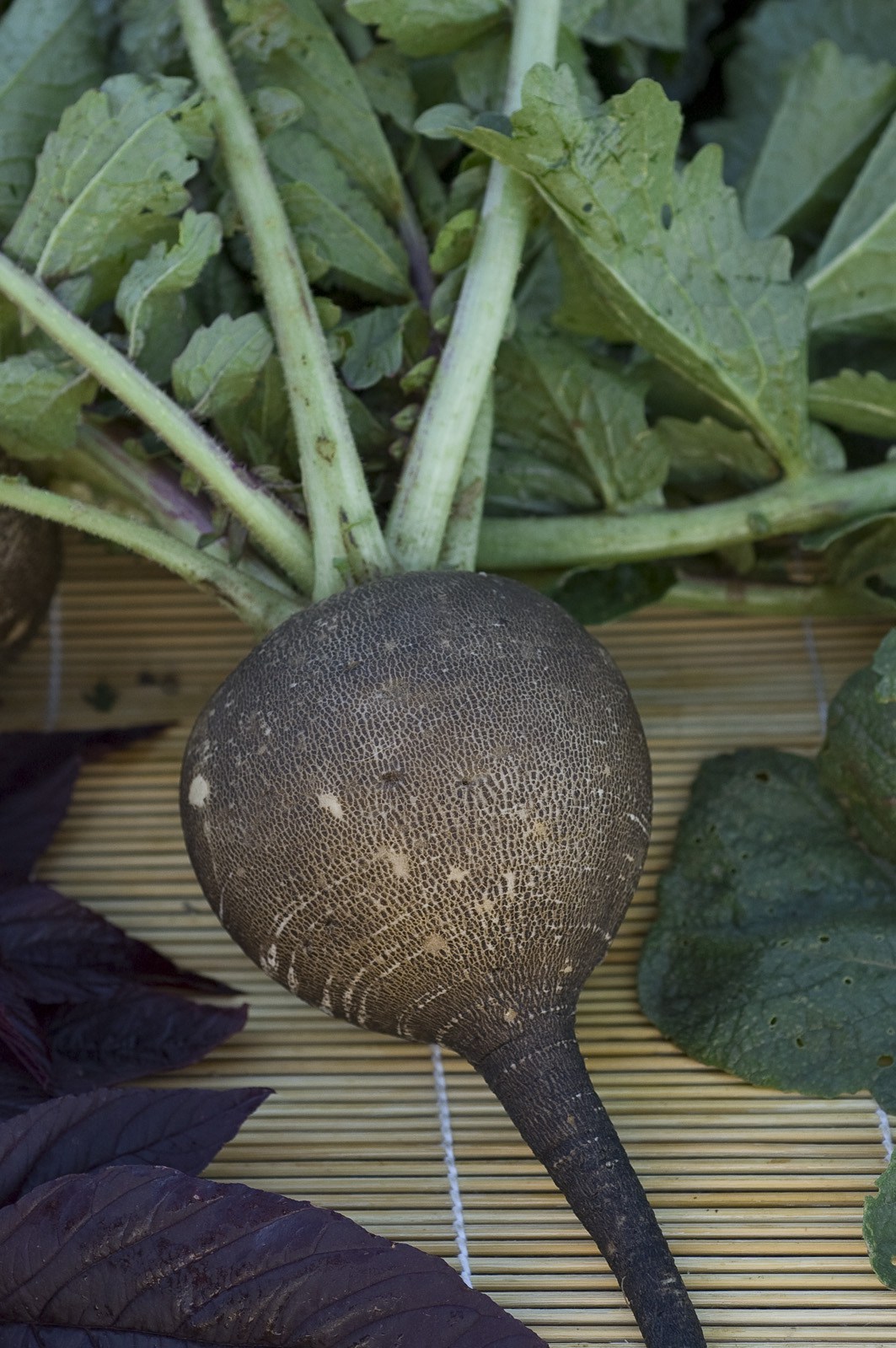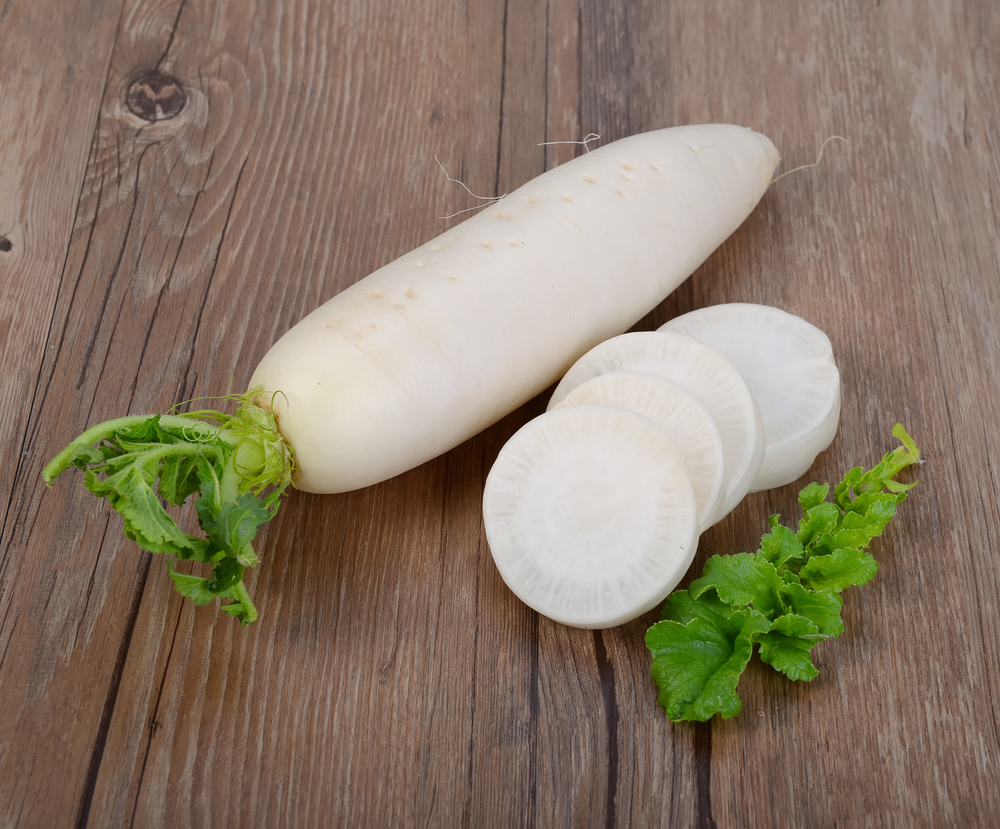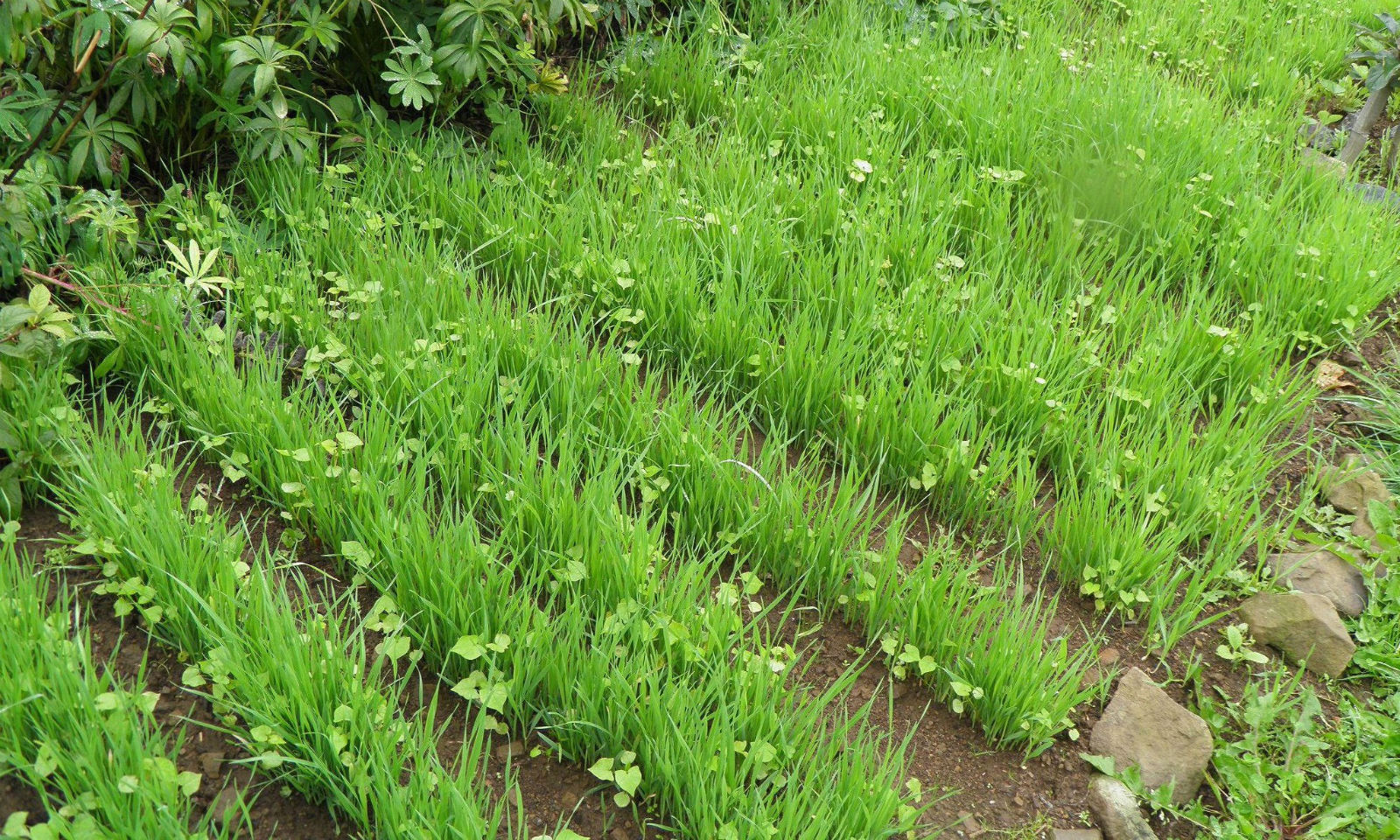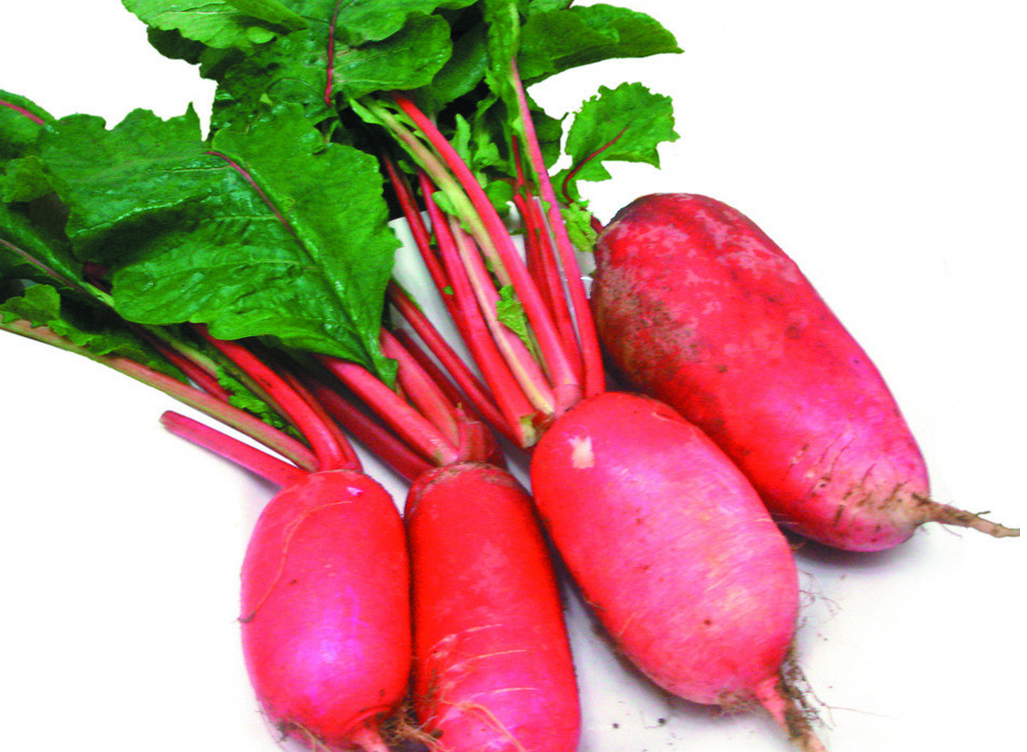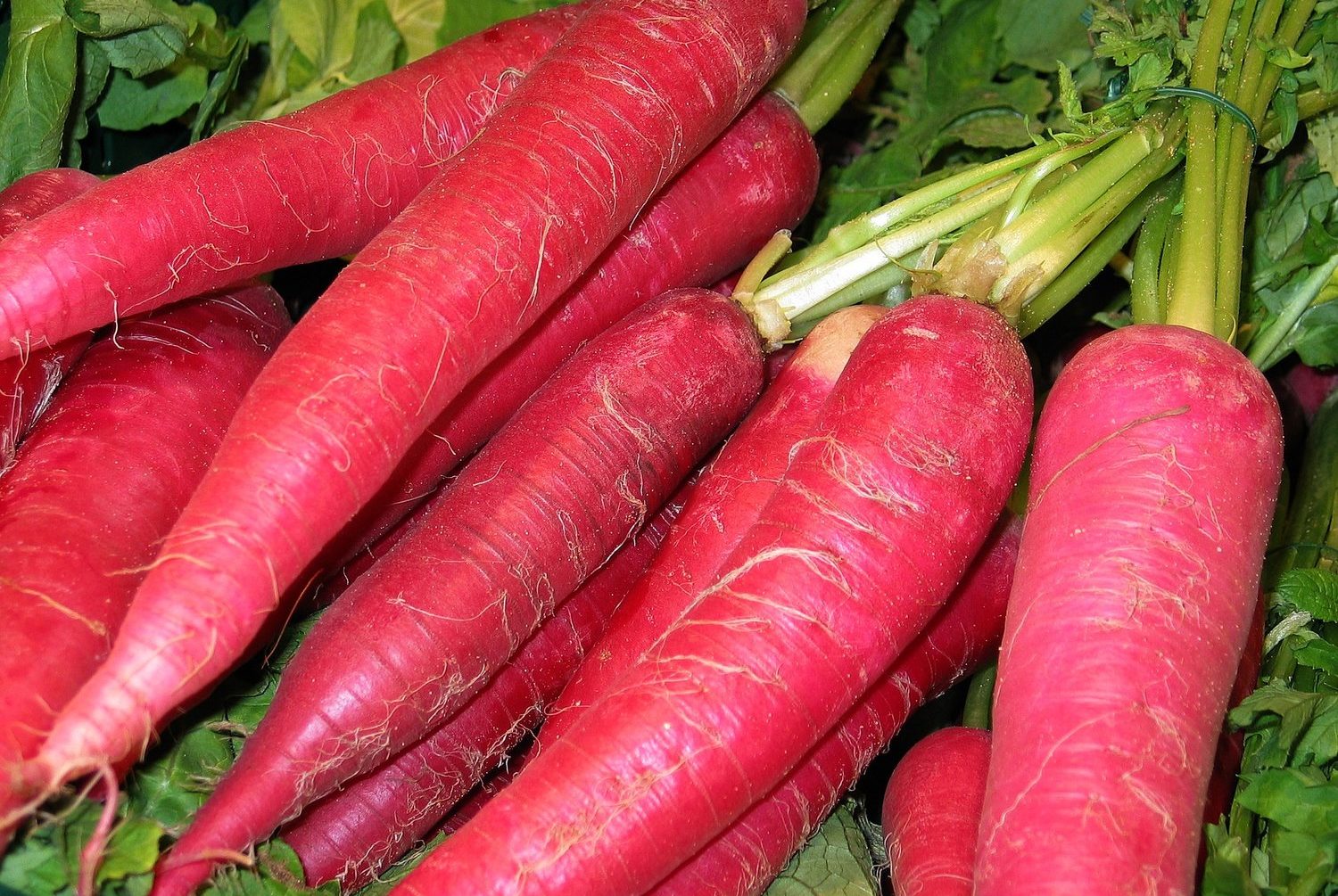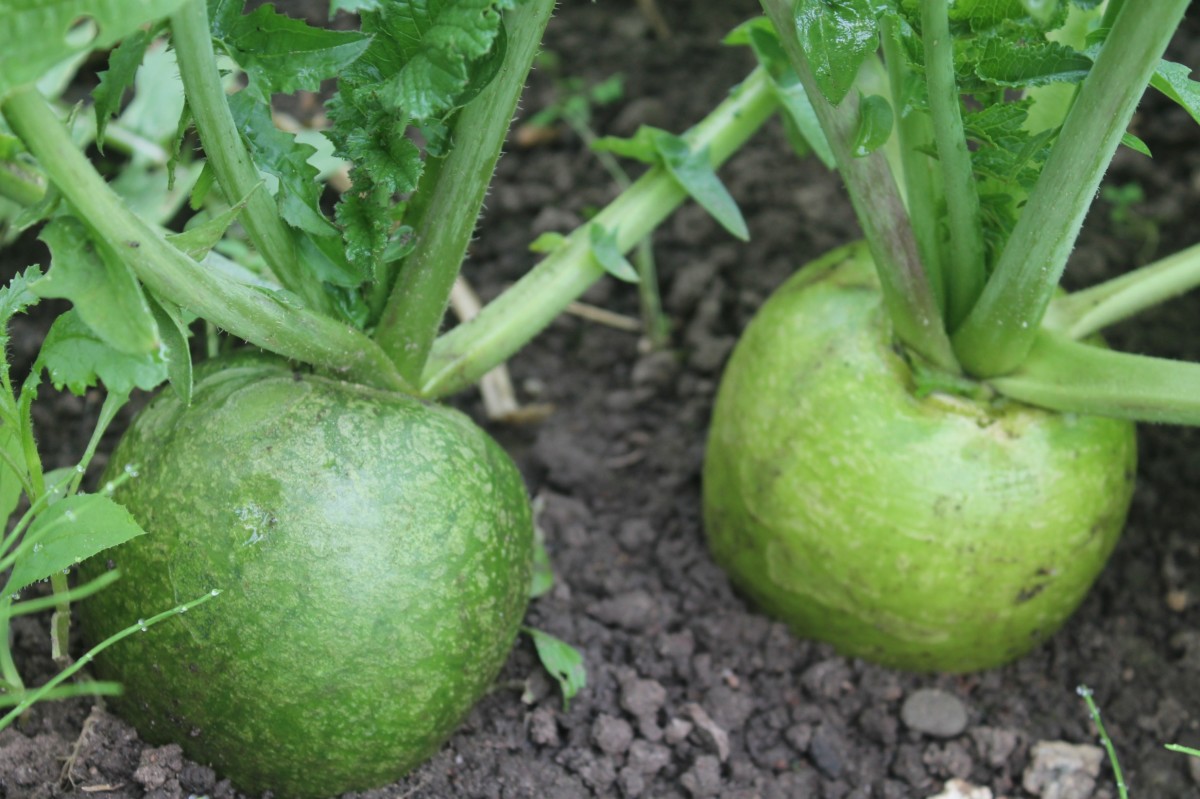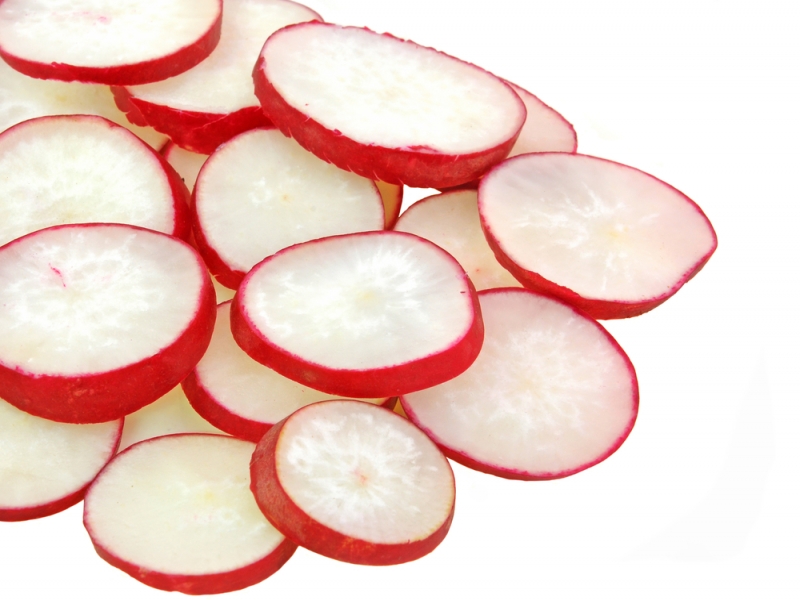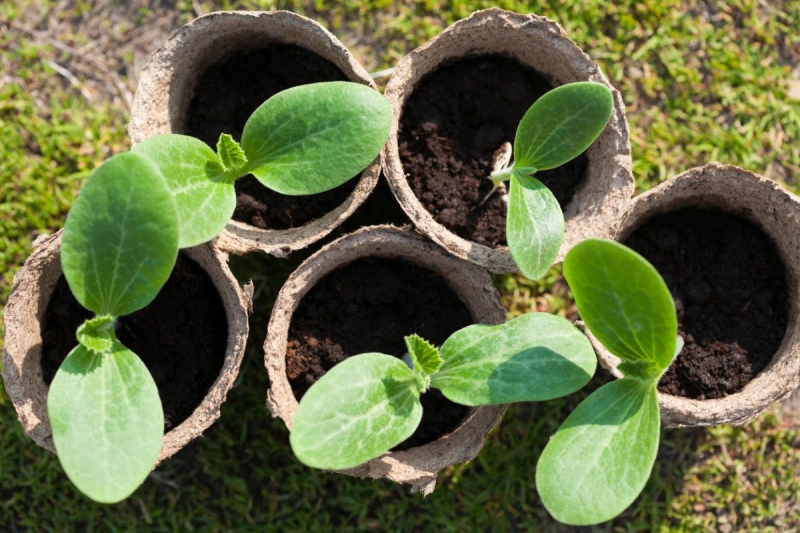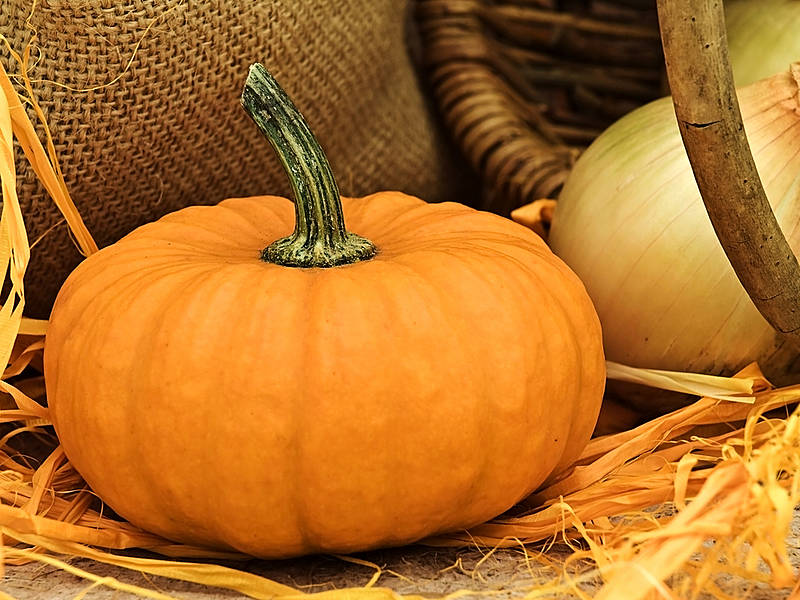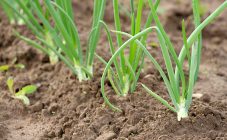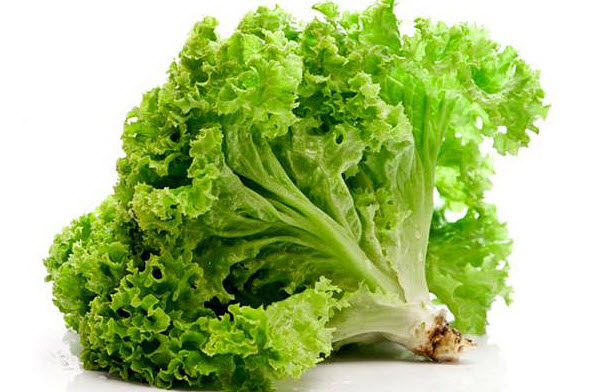Radish belongs to the Cabbage or Cruciferous family, as well as radishes, cabbages and turnips. Radish is one of the oldest root crops known in Russia since the XIV century. There are European, Chinese and Japanese varieties of radish. The European spicy radish, which is most often grown by all gardeners, the sweet Chinese radish is called loba, and the Japanese radish is called daikon.
Description of culture
Radish is an annual or biennial herb. A two-year-old radish forms a root crop in the first year, and seeds in the second year. Biologically, a radish is similar to a radish, but with a more powerful root crop, weighing from 200 g to 3 kg, of various shapes. There are different colors of radish skins: green, white, pink and black.
The radish has large leaves, varied in shape, size and degree of pubescence, incised or whole. By the end of the growing season, the rosette has 6-12 leaves, the length of which can reach 60 cm. Ripening in early varieties lasts 55-90 days, and in late-ripening - up to 120 days. Planting time is spring to mid-summer.
Black radish is considered the most valuable for its medicinal and nutritional qualities. Black radish is always only a biennial plant. Common varieties: Winter round black, Sultan, Ladushka.
This is a fruitful and unpretentious cultivation species. Black radish comes in early, mid-season and late ripening periods. Root crops are round, with a smooth, slightly grooved surface, weighing 250-600 g, 9-11 cm long. The flesh is white, with a pungent taste. The winter variety is intended for long-term storage and shows good keeping quality.
When to sow black radish depends on the maturation of the variety:
- early maturing - can be planted in March;
- mid-season - sow in mid-June;
- for late maturing, correct sowing - in mid-July.
European varieties are distinguished by a sharp taste, bitterness and a specific rare aroma. A typical variety of sown radish is round and oval-elongated, white and black in color.
Chinese radish lobo or margelan is a plant mainly with unbroken leaves, which further distinguishes it from other species. The culture can be of one-year and two-year growth. Lobo should be sown from mid-summer. Root crops with a red or green tint, round or oval. The taste is milder than European radish.
Daikon is a radish of Japanese origin, does not contain mustard oils, like European, therefore it has the mildest taste of all varieties of culture. The shape of the roots is elongated, long, reaching a size of up to 60 cm, the flesh and skin are white.
Agrotechnics of culture
Radish seeds are brown, rounded. For sowing, take healthy, pure-grade seeds. Before sowing, the seeds are calibrated by size and weight. Large specimens have a high germination capacity, give friendly strong shoots. To select seeds, they are placed in water with salt, the floating seeds are empty, they are removed.
Various fungal and bacterial diseases can be transmitted through the seed bank.For disinfection, the seeds are soaked in a solution of potassium permanganate for 18 hours.
To increase germination, seeds can be pre-germinated before sowing in open ground.
Usually radish planting is carried out by direct sowing into the ground. But in some cases, radish is grown through seedlings, especially when there is a lack of space. Seedlings are pre-sown in tall pots, then planted in places of already harvested early-maturing crops, for example, garlic. Radish can be grown without a separate bed, but together with cucumbers, potatoes and onions. Also, the crop can be grown in greenhouses.
Early varieties of radish are grown for consumption in summer, when the May radish is planted, and later varieties are used for winter storage. Early varieties can be sown in the first decade of March. Radish is a cold-resistant plant, seedlings can withstand frosts down to -3 ° С, and adult plants - up to -5 ° С. Later varieties are sown in late June and early July.
Planting radishes in open ground with seeds of varieties such as lobo and daikon is carried out only in early to mid-July, because overgrown root crops become empty inside and have a bitter taste.
Radish is sensitive to the length of daylight hours and under prolonged illumination fades into color, so it is important to choose the right time when planting the radish in open ground with seeds.
For the successful growth of culture, fertile loamy or sandy loamy soils are required. In order to prevent deformation of the fruit, stones should not be present in the soil. For impoverished lands, additional feeding will be required. Fresh organic matter is not used for fertilization. More suitable feeding is applied in liquid form, for example, poultry droppings are diluted 1:10 and manure is diluted 1: 4. Fertilizer consumption in this case will be 25 liters per 10 m². Radish does not tolerate waterlogging of the soil; in the Moscow region it is better to plant it on high ridges.
The biological feature of the radish is that in the presence of a large root crop, there is a weak root system, therefore, the soil for the garden is dug deeply, loosened. When radish is planted, the seeds are pre-mixed with sand or sawdust. For sowing, rows are outlined, 2 cm deep, with a row spacing of 30-40 cm, the grooves are spilled with water. Daikon seeds are laid to a depth of 5-6 cm.
The seeds scattered into the holes are sprinkled with soil on top. Sowing varieties in the middle of summer are made more rarefied. Watering is required for seed germination. After sowing, in some cases, the planting of the radish is covered with a film until germination, which can replace watering. The optimum favorable temperature for seed germination is from + 20 ° C to + 25 ° C, and for the growth of root crops - + 20 ° C.
Culture care
Growing radishes and outdoor care require adequate watering because the crop is sensitive to dry air. At a relative humidity of up to 40%, the growth of the root crop stops, and the quality of the fruit deteriorates. In hot summer, radish can give flabby fruit with voids, which will later be poorly stored. Voids are formed due to the fact that the green part of the plant absorbs moisture from the root crop when it is lacking in the soil and air.
During a drought, moisture-loving radish can also quickly turn into color and lose up to half of the harvest, the roots become coarse and become bitter. At the same time, with prolonged soil moisture, the root crops become watery. For harvesting it is important to choose the right place before sowing the radish, where moisture will not linger.A good irrigation method for crops is drip irrigation, which you can do yourself.
Watering should be combined with loosening. Loosening is carried out as the soil becomes coarse, and once every 2 weeks, deep loosening of the row spacings is carried out, to a depth of 4-6 cm, without touching the root part. After loosening, top dressing is good. At an early age, the radish can be fed with slurry, superphosphate or potassium chloride. Nitrogen fertilizers are not used, they can harm root crops.
To obtain more juicy and large fruits of the European variety of radish, the method of rocking the root crop is sometimes used. During growth, with a little rocking, the lateral roots are partially cut off at the root, and nutrition begins to flow through the central taproot.
A thickened planting will also provoke flowering and deterioration in the quality of the fruit, so thinning is required. The first thinning is done in the phase of 2 true leaves, leaving 10 cm between roots. At the second thinning, when 4 leaves have appeared, a distance of 15-20 cm is left.
When planting early, the radish is collected selectively, and when harvesting for storage - at one time and before the onset of frost. Cleaning is carried out in dry weather. The tops are cut off, leaving a stump of 2 cm. During storage and transportation, vegetables require careful handling, trauma to the root crop leads to diseases during storage.
To obtain seeds for the next year, the root crop can be dug up and stored in the same way as for eating - in a cool place. The so-called mother plant is a root crop for growing seeds, planted in early spring, in conditions of a long color day, it will bloom quickly. After the radish blooms, seeds will begin to form, when they turn yellow-green, they can be harvested. The stems are pulled out and dried until the seeds spontaneously fall off.
Diseases andpests
Plant pests are different: insects gnawing leaves, slugs, cabbage fly, white-winged cabbage butterfly. The cruciferous flea infects crops during the germination period and can completely destroy the crop. Seedlings are sprayed with chlorophos solutions or thiophos emulsion. From natural sprayers, infusions of garlic, tobacco or onion peels are used. From folk remedies against fleas, sprinkling with ash or dust is used, but you should not use a lot of ash when growing radishes.
Keelu is a disease of the radish root system, provoked by acidic or overconsolidated soils. To prevent keels, the soil should be deoxidized by liming. Liming is carried out in the previous season, before winter during autumn digging. Hilling vegetables also helps from the disease. Plant residues after keel damage are not used in the future in compost pits.
To prevent various diseases of the radish, the soil is dug to a depth of 40 cm before planting. For favorable growth, the correct timing is observed when to plant radish for different varieties, remove weeds and mulch the soil under the plantings, including with special inorganic materials.
Radish is an unpretentious and very useful vegetable crop. Radish is cultivated most often for winter long-term storage, because it does not lose its vitamin value. It is not difficult to grow different varieties of radish if the planting dates are observed, and when storing winter varieties, the root crop can be consumed almost all year round. Winter is characterized by the season of colds, and radish with honey has an antimicrobial effect and becomes a natural medicine for the treatment of child and adult coughs.
